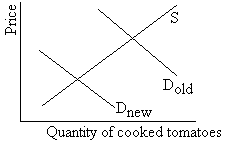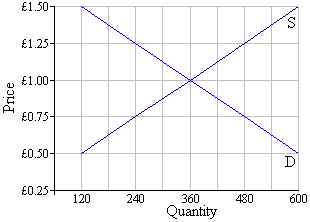 At a selling price of £3.00, the company would sell approximately 1200 widgets a month. At a selling price of £3.00, the company would sell approximately 1200 widgets a month. At a selling price of £3.00, the company would sell approximately 1000 widgets a month. At a selling price of £3.00, the company would sell approximately 1000 widgets a month. At a selling price of £4.50, the company would sell approximately 1000 widgets a month. At a selling price of £4.50, the company would sell approximately 1000 widgets a month. At a selling price of £4.50, the company would sell approximately 800 widgets a month. At a selling price of £4.50, the company would sell approximately 800 widgets a month. At a selling price of £4.50, the company would sell approximately 200 widgets a month. At a selling price of £4.50, the company would sell approximately 200 widgets a month.
|
|
 drop by 5% drop by 5% stay the same stay the same increase by 5% increase by 5% increase by 10% increase by 10% increase by more than 10% increase by more than 10%
|
|
 A manufacturer reduces the price of an item from £2.50 to £2.30 in the hope of being able to sell more of that item. A manufacturer reduces the price of an item from £2.50 to £2.30 in the hope of being able to sell more of that item. A consumer who was not willing to buy a car at £10,995, but was prepared to buy it at £9,995. A consumer who was not willing to buy a car at £10,995, but was prepared to buy it at £9,995. An American tourist who was expecting to be charged at least £3.00 for a burger, but was only charged £1.99 instead. An American tourist who was expecting to be charged at least £3.00 for a burger, but was only charged £1.99 instead. A market reaches a condition whereby the demand for a product is greater than the producers' ability to supply it. A market reaches a condition whereby the demand for a product is greater than the producers' ability to supply it. Government statistics show that house prices rose last year by 25%. Government statistics show that house prices rose last year by 25%.
|
|




 Go back
Go back